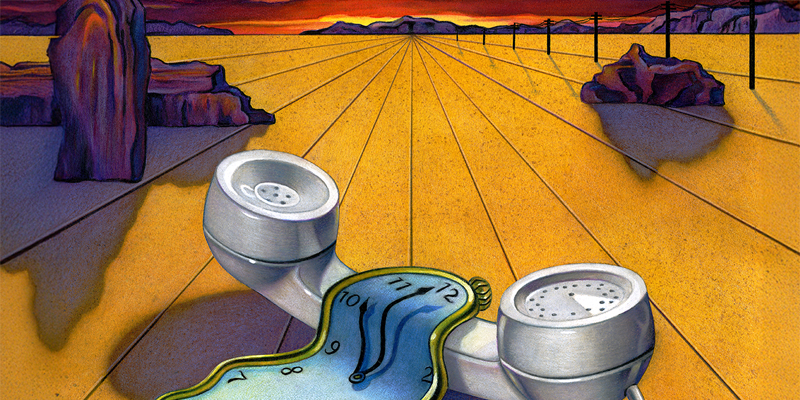|By J. Robert Parks|
Depending on your point of view, Surrealism is a delightful, weird, unsettling, tedious, or even invigorating artistic movement from the early twentieth century. Yet, no matter what your perspective is, its influence is undeniable. Although Surrealism encompasses film, literature, photography, and theater, most people associate it with the paintings of artists like René Magritte, Yves Tanguy, and especially Salvador Dalí. This November marks the 100th anniversary of the first Surrealist art exhibition—an event that took place in Paris in 1925. If you’re an educator or librarian hoping to spark your students’ interest in this movement, we encourage you to explore our comprehensive material on Surrealism and its historical context in Gale In Context: World History.
The great French poet Guillaume Apollinaire was the first person to use the term “surrealism,” which he applied to Jean Cocteau’s ballet Parade in 1917. But it was the French writer André Breton who is considered the father of the movement. A year before the 1925 exhibition, Breton wrote a manifesto in which he argued for a new way of understanding the world that rejected an emphasis on rationality and instead strove to transform one’s imagination. The movement was inspired, in part, by the work of psychoanalyst Sigmund Freud. Breton had used Freudian psychoanalysis during World War I to help soldiers suffering from shell shock, and he thought writing could help explore the unconscious by pushing language to the point where it teetered on inscrutability. In that, Surrealism was also influenced by the Dada movement, with which Breton had been associated.
The writing exercise of the exquisite corpse is a particularly useful example of Surrealism (and a potentially fun exercise to use with even young students). It’s a parlor game in which someone writes part of a sentence and then passes it on to the next writer, but the next writer can only see the last two or three words. They add their own writing and pass it on to another writer, again concealing all but two or three of the last words, and so on. At the end, the entire text is read out loud, which often inspires both giggling and fascination at some of the strange juxtapositions. The same kind of game can be played with drawing as well.
In his Manifesto of Surrealism, Breton declared that Surrealism would revolutionize how people live by challenging how they perceived the world around them, particularly in what they viewed as normal or traditional. In art, Surrealism embraced the marvelous, a kind of beauty that would trigger an eerie shudder in the viewer. The Surrealists also rearranged what was normal into strange and unsettling compositions. Some have compared such works of art to looking at a cracked mirror.
Surrealist artists were influenced by the Italian painter Giorgio de Chirico, who created barren city landscapes. These metaphysical paintings used contrasting light and shadow that hinted at some kind of unknown evil. The 1925 exhibit included some of Chirico’s work along with early Surrealists such as Man Ray, Joan Miró, and Max Ernst. Art critics have noted that they all embodied Surrealism in some way but that each painter had a different style, which made for an exciting exhibit. Magritte and Dalí soon embraced the movement, and their paintings from the late 1920s and 1930s are particularly iconic examples of Surrealism. Dalí’s The Persistence of Memory, with its melting clocks, is especially well-known and distinct aesthetically from Magritte’s chilly use of ordinary objects in unusual settings and Tanguy’s inexplicable landscapes.
Although Surrealism was a distinctly French movement, it soon spread across the world, flourishing particularly in Spain and Latin America. The film director Luis Buñuel and the poets Pablo Neruda and Octavio Paz are just a few of those who embraced it. Surrealism as a movement ended with the onset of World War II, but its influence was wide and deep, inspiring everyone from the Beat poets of the 1950s to novelists such as Thomas Pynchon and Salman Rushdie to filmmakers like Federico Fellini and David Lynch. Anyone willing to let their imagination roam will still find inspiration there.
Meet the Author
J. Robert Parks is a former professor and frequent contributor to Gale In Context: U.S. History and Gale In Context: World History who enjoys thinking about how our understanding of history affects and reflects contemporary culture.


